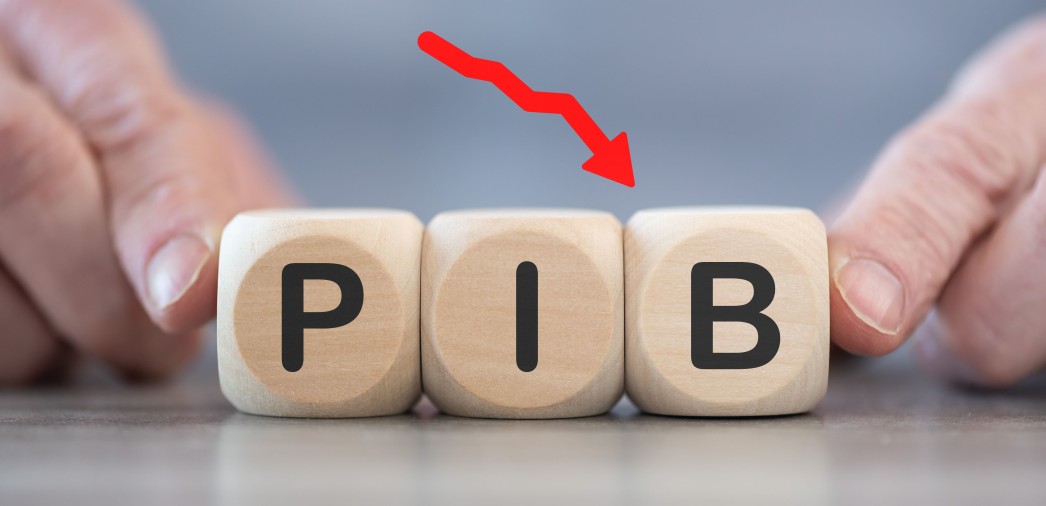Preliminary figures from the start of the year have already put economists' forecasts on the ropes, raising the possibility of quarterly declines that sharply dampen growth in President López Obrador's final year; Until the long-awaited private investment rises through the near miss.
Hard Data: On Thursday, industrial activity for February was reported to have fallen (-)0.1% on a monthly basis, with seasonally adjusted actual figures; A far cry from the 0.2% growth expected by analyst consensus. The industrial decline was dragged down by a sharp monthly contraction of (-)2.5% in construction, which offset 0.5% growth in manufacturing.
A reference to the economy's monthly behavior – the industry summary confirmed the economy's poor start after the Global Indicator of Economic Activity (IGAE) – fell (-) 0.6% in January, marking the fourth consecutive decline. Monthly (Oct'23 to Jan'24).
Three main indicators of the economy decreased: in January, consumption decreased (-0.6%), after weak growth (0.2%) in December; Investment grew just 0.1% in January, ending several months of sluggishness. After a 2.5% contraction in January, exports rebounded in February (4.2%), driven by strong growth in the auto sector (7.9%).
Considerations: The latest economic data for February contradicted the forecasts of most economic analysis groups in the country and abroad, regularly surveyed by the Bank of Mexico (Banxico) and Citipanamex.
In a Banxico survey published on April 2, economists forecast growth of 0.54% in the first quarter, a figure already considered practically impossible by the IGAE in January and industrial activity in February.
In analysts' defense, the typical behavior of the economy in an election year is expected with strong activity in the first semester, slowing down in the second semester after the election. This did not happen at the start of this election year. We still have to wait for data on the behavior of the economy for March and April, which will reverse the trend seen so far and boost the economy in the second quarter. A leading indicator released by the National Institute of Statistics and Geography (INEGI) shows a recovery in the short term.
Central Question: The poor figures of the first two months are already forcing us to reconsider the expected growth for the year. In early March, it warned that the economy would not grow at 3% as claimed, but was heading towards 2%. Now,that level may be the ceiling, while the floor is below half a percentage point. The strength of the labor market, driving consumption, will offset the slowdown in investment in the election year, although annualized consumption is showing signs of fatigue, hurt by lower growth in dollar remittances and lower purchasing power. The strength of the peso.
Factors encouraging economic activity, such as greater and unexpected activity in the consumption of goods in the United States – boosting Mexican exports – and new investments due to nearshoring are on the table, although their incidence rate is still low.
Revised Expectations: Some economists, still very few, have already revised downward their expectations for economic growth for the year. Banco Base cut its forecast to 1.6% from 2.5%. JP Morgan, 2.3% to 1.9%. Citipanamex, 2.2% to 2.1%. However, the consensus is still at 2.4%, with forecasts ranging from 3.4% (Masari), 3.0% (Barclays), 2.8% (Scotiabank), 2.7% (HSBC), 2.6% Finamex. At the other end, XP Investments maintains the lowest expectation, at 1.4%.
The consensus estimate for the first quarter was 0.54%. However, Banco Pays is now forecasting a (-)0.4% drop and Bradesco (-)0.3%.
Experts speak:
- Marco Oviedo, senior strategist for Latin America at XP Investments, said he was considering changing his forecast for the year to 1.0% from 1.4%, given the 1.4% forecast for a 0.9% recovery in the second quarter. Good recovery,” after a contraction in the first quarter. However, Oviedo responded that the economy's recovery in the second half “depends on the private sector and close history. But assuming it's going to be an issue, I expect a slowdown,” Oviedo said.
- Julio Santella, the former president of Inegi, said the dynamic construction sector that had once fueled industrial activity had lost steam. “Construction activity has radically changed its evolution in the last 4 months: from August 2022 to October 2023 (29.2%) growth, the pace is now falling to (-) 4.6% later (Oct-Feb),” he wrote. His
- For BBVA, trade (retail and wholesale) will contribute one-third of GDP growth in 2024 (0.9 points of 2.5% expected growth), while manufacturing will contribute another 0.6%. “In general, services contribute the most in terms of growth rate to total GDP, as industry has a very modest performance,” it said in its recently published Mexico 1H24 Regional Sector Outlook report.
what to do: The upcoming figures on consumption and investments in Mexico and the United States will be relevant in a year with high uncertainty and volatility in financial markets due to geopolitical and electoral situations.
The timely release of private consumption figures for March, on Tuesday the 16th, is a benchmark for assessing the strength of spending in the economy. BBVA's Big Data consumption indicator grew 3.5% in February on a monthly, actual and seasonally adjusted basis; After 0.5% in January.
Corresponding data will have to await the preliminary IGAE for February, which will be released on April 22. The first GDP figure for the first quarter will be released on April 30.

